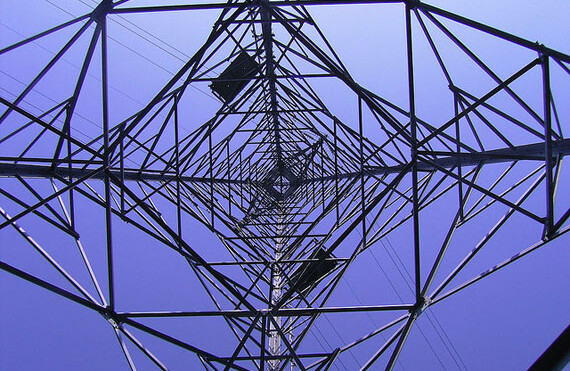A few weeks before becoming president, Barack Obama gave a speech that might foreshadow his energy policy. "For over three decades, we've listened to a growing chorus of warnings about our energy dependence. We've heard president after president promise to chart a new course. … Yet our dependence on foreign oil has only grown, even as the world's resources are disappearing," he said.
Obama's reference to three decades is significant. It was during the 1979 energy crisis that U.S. oil prices spiked to $40 per barrel and U.S. President Jimmy Carter promised greater energy self-sufficiency and implored Americans to conserve. It was also in 1979 that the Japanese Diet passed the Law Concerning the Rational Use of Energy. Against this backdrop, Obama is correct to characterize U.S. policy for the past 30 years as inconsistent and incoherent.
Japan, by contrast, charted a clear course and gave marching orders to its bureaucracy. What followed was a wholesale reorganization of the government's attitude toward energy security and a nationwide effort on energy consumption, conservation, and efficiency. Aided by a moral disposition against waste (mottainai) in Japanese culture, Japan became the social experiment U.S. policymakers were afraid to impose on the American people. By harnessing the conservation efforts of millions of households and businesses, Tokyo succeeded in restraining growth in energy consumption even as its economy continued to expand throughout the 1980s and 90s.
Policy Founded on Energy Insecurity
Conservation, the foundation of Japan's energy policy, is rooted in a sense of resource scarcity. Lacking domestic oil resources and systematically cut off from U.S. imports in 1940–41 as World War II gathered steam, Tokyo saw the Indonesian oil fields as a means to secure fuel for its war machine. Subsequently, the U.S. occupation of Japan set out to dismantle the Japanese petroleum industry.
A coherent energy policy was not in the cards at that point. Rather, the focus was on reconstruction and heavy industry as the engine of economic growth. Powered by domestic coal, the Japanese economy rebounded rapidly, though this growth came at a cost: Electricity shortages were common by 1950, and electricity prices shot up 30 percent in 1951.
The U.S. forces stationed in Japan during the Korean War were reliant on petroleum, and this led to improvements in Japanese oil infrastructure and refining capacity. In combination with coal's fall from grace due to increasing pollution and labor unrest among coal miners, Japan's energy calculus shifted in favor of oil, ushering in a transition that would guide the next 20 years of development.
By the time of the first Arab oil embargo in 1973, Japan was more reliant on oil than any other developed country. With few hydrocarbon reserves and limited alternatives, the Japanese economy was severely impacted, resulting in energy price inflation and a reconsideration of the country's industrial model.
From Jogging to Top Runner
Japan weathered the second oil shock better than most OECD members due to remarkable gains in efficiency that were squeezed out of the economy. It was also able to capitalize on the world's newfound demand for energy conservation by exporting fuel-efficient cars and other alternative energy technologies.
While the pre-1973 expansion followed a pattern of development well trod by the United States and other OECD economies, the torrent of policy initiatives brought on by the oil shocks catalyzed the rapid turnaround that allowed Japan to become an "efficiency superpower." By most estimates, Japan leads rich countries today in energy efficiency.
In late 1973, Japan's Petroleum Supply and Demand Optimization Law set oil-supply targets and restricted oil use. To insulate the economy from turbulent market effects, the Petroleum Stockpiling Law of 1975 provided financial assistance to private companies for the maintenance of a 70-day supply of petroleum products.
The general sense of energy insecurity also helped the government overcome some of the public's anti-nuclear sentiment. The passage of three laws in June 1974 in support of the nuclear industry [PDF] led to rapid growth in its share of energy production. Japan went from having one commercial and two experimental reactors in service in 1970 to 46 reactors accounting for 30 percent of the country's electricity production in 1993.
Recognizing the need to decrease Japan's dependence on the Middle East, Tokyo levied import taxes on petroleum products, particularly those used in power generation. Japan thus became a pioneer in liquefied natural gas, currently accounting for half of the world's market.
There has also been a resurgence of coal, primarily because of its abundance and diversity of suppliers. Japanese companies now lead the field in producing super-critical boilers capable of reaching efficiencies of more than 40 percent—versus percentages in the mid-20s for traditional coal-fired power plants.
The 1980s in Japan was a period of continuing improvement. A shift to lighter manufacturing allowed producers to move much of the energy-intensive primary processing to other countries, while concentrating on high-tech products further up the value chain.
Paradoxically, the success of these efforts pushed Japanese industry against an efficiency ceiling. Japan's Kyoto Protocol commitment—a 6 percent reduction in greenhouse gas emissions below the 1990 level by 2012—has been described by Japanese officials as akin to trying to wring water out of a dry towel. Indeed, efforts by the Japanese government to purchase carbon credits from Eastern Europe suggest the need for fresh thinking on Japan's approach to energy. As Nobuo Tanaka, head of the International Energy Agency, said in an interview, "It's difficult to change policies when previous ones were successful."
So the work continues. In 1993, the New Energy Development Organization (NEDO) implemented the New Sunshine Project to coordinate domestic renewables research and development programs. Focusing on energy conservation in the residential and commercial sectors, its Top Runner Program identifies the most energy efficient model in a variety of product categories and mandates that new products meet that standard of efficiency. The program was amended in 2008 to call for even greater improvements in vehicle fuel efficiency by 2015.
The installation of alternative energy sources, however, has proven challenging in this densely populated country. Hydroelectric potential had been exhausted by the 1960s and now accounts for only 9.5 percent of electricity production. NEDO's support for solar power, until 2002, halved the price of photovoltaics and led to their widespread adoption. Japan provides nearly 40 percent of the world market and innovation leadership in thin-film solar technology, but the expiration of subsidies combined with Germany's adoption of a feed-in-tariff may lead to the crowning of a new market leader.
UPDATE: Concern among Japan's political and industrial leaders over potentially losing their global lead in solar cells has led to discussion of renewing the subsidy policy. As the chart below illustrates, Japanese households were keen adopters of photovoltaic systems until the subsidy ended. With the hope of boosting both the PV industry and the economy as a whole, Tokyo has reintroduced these policies in its latest stimulus bill.

Graph depicting the effect of Japanese solar subsides. Credit: Hajime Ito, President, JETRO New York.
Looking Forward
Recognizing the need to push ahead, former Prime Minister Shinzo Abe introduced the Cool Earth 50 initiative, challenging countries to reduce global CO2 emissions 50 percent by 2050. Stemming from this proposal are new policies adopted by the Diet to promote research and development and raise public awareness of the country's goals and commitments. In Davos this week, Prime Minister Taro Aso announced that this spring Japan would set "concrete" mid-term emissions goals for 2020 to reach the 2050 target.
Japan is like an ocean liner that shifts course in response to big events. Just as Commodore Matthew Perry's dramatic porting of his "black ships" in Tokyo Bay in 1853 helped usher in the Meiji Restoration, and two atomic bombings pushed Japan to "embrace defeat" in 1945, the oil shocks of the 1970s gave birth to Japan's aggressive efficiency drive.
In the United States, the U.S. Chamber of Commerce has called for an energy policy that promotes efficiency, diversification of supply, infrastructure improvements, and environmental stewardship. These goals could have been taken from Japan's old energy policy playbook.
Thirty years after the efficiency push, a new approach is needed to restore Japan's leadership in energy conservation and environmental stewardship. The global economic downturn is seen by some as the catalyst to bring about this change, but it also poses challenges in the form of reduced funding, price incentives, and demand. As Ichiro Sumikura of Japan's Environment Ministry recently put it, "We want to take the initiative and build a leading low-carbon society while stepping out of recession before anyone else in the world."
The climate change challenge cannot be met by one country alone. Perhaps haunted by the Bush administration's decision to ditch the Kyoto Protocol, Aso warned in Davos, "We can't have plans which are not agreed by the United States, China, or India." If the United States chooses to take a leadership role in climate change and sustainable energy policy, it would do well to look at the lessons from Japan's experience.
This article is based on an excerpt from a chapter on Japan, by Devin Stewart, Chris Janiec, and Warren Wilczewski, in the forthcoming book Energy Security Challenges for the 21st Century (Praeger Security International, June 2009), edited by Gal Luft and Anne Korin.





